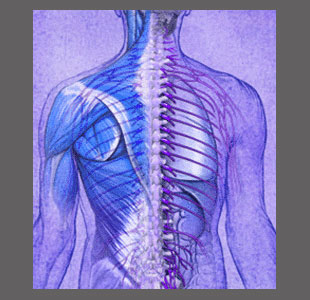
Pilates for foraminal stenosis is a form of exercise treatment that is often incorporated into physical therapy programs. Pilates was originally developed as a rehabilitation method to assist injured soldiers and still has deep roots in the rehabilitation medical sector today, despite becoming a popular fitness activity in the mainstream.
Is Pilates right for you as a neuroforaminal stenosis patient? What benefits will it provide, if any? More importantly, are there risks and special considerations that stenosis sufferers need to know before participating in Pilates.
This discussion centers on the pros and cons of using Pilates as a foraminal stenosis sufferer.
Pilates for Foraminal Stenosis Description
Pilates is intensive and strenuous, allowing for a really thorough workout with an emphasis placed on the core torso muscles, including those which support the spine and regulate its movement. However, Pilates is also nonimpact and generally quite safe when performed properly. Remember, its very nature was designed to rehabilitate soldiers with grievous injuries.
Pilates can be performed without any equipment, although some techniques do rely on a few proprietary apparatus that are designed for highly specific tasks. Even if a person chooses to invest in these apparatus, (which are mostly optional and not even needed in many styles), the investment cost is not overly high.
Pilates can be done with a fitness trainer, physical therapist or alone by any person who is properly trained in the exact manner in which each activity and exercise should be performed.
Pilates Pros and Cons
Let’s first explore the benefits of Pilates, both generally and specifically for people who have neuroforaminal stenosis:
Pilates is an excellent form of exercise that works many parts of the body.
Pilates is generally considered very safe and injuries are not commonplace.
Pilates focuses on strengthening the very muscles that support the spine.
Pilates can be easily adapted to accommodate people with all manner of health issues.
Pilates can accommodate people of all ages and physical abilities.
Pilates provides positive health benefits, such as lowering blood pressure.
Pilates also provides limited cognitive benefits, such as increased focus.
The downsides of Pilates are not universally suffered by all people, but everyone should be aware of all potential cons before attempting to use this exercise system:
Pilates is designed to be challenging. Some people are put-off by the effort required.
Pilates may exacerbate some symptoms, usually temporarily.
Pilates will not cure stenosis.
Pilates may or may not help to reduce symptoms and increase functionality.
Pilates accessibility may be limited in some areas.
Pilates is not the only form of exercise that provides these potential benefits and downsides. There are other options available which may serve the physical and interest-based needs of some patients better, including tai chi, calisthenics, swimming, yoga and other general types of activity-related exercise therapy.
Pilates for Foraminal Stenosis Treatment
Pilates does not act on the spine itself and provides no reduction in spinal or foraminal stenosis. No therapeutic effect is implied or provided that will positively alter the underlying causative condition of stenosis. The best that can be hoped for is a marked improvement in functionality and symptomatic reduction, as well as an overall improvement in general health. However, since these are still great objectives, we recommend Pilates as a consideration for people who are interested in exercise therapy or those who have enjoyed positive results of activity on their pain in the past.
To learn more about the potential benefits and downsides of Pilates for stenosis, talk to your physical therapist. They will be able to assist you in determining if the therapy is optimally suited to your needs, goals and specific diagnosis.
Spinal Stenosis > Spinal Stenosis Exercises > Pilates for Foraminal Stenosis





